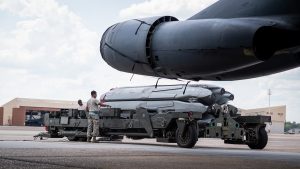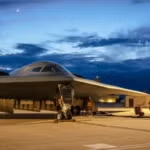
The U.S. Air Force on July 1 awarded Raytheon Technologies' [RTX] missiles and defense division in Tucson, Ariz. a $2 billion cost plus contract with performance incentives for the engineering and manufacturing development (EMD) phase of the Long Range Standoff Weapon (LRSO). The contract could raise the hackles of House Armed Services Committee Chairman Adam Smith (D-Wash.). Smith said this week that, while the Air Force's Ground Based Strategic Deterrent next-generation ICBM should be left alone, for now, nuclear weapons…














